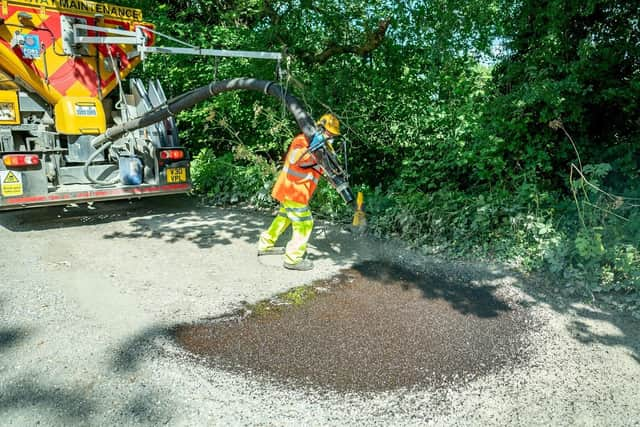Machines will proactively seek and fill potholes across West Sussex
and live on Freeview channel 276
The initiative is part of a two-pronged “attack” on potholes, with the innovative Velocity system used in addition to the traditional inspection/repair regime.
The Velocity road patchers are used to fill potholes sizeable enough to need filling under safety criteria but also to repair defects likely to further deteriorate and reach that level in the near future.
Advertisement
Hide AdAdvertisement
Hide AdWhen selecting routes to attend, the teams focus on those with the highest, historic pothole numbers, to try to optimise value for money and results.


In the first four weeks of the 2022/23 financial year, the two road patching machines completed just over 1,100 repairs and treated approximately 3,000sqm of the highway network.
Joy Dennis, West Sussex County Council’s cabinet member for highways and transport, said: “We know how important the condition of our roads is to residents and are proactively tackling the issue of potholes.
“The deployment of two Velocity machines follows last year’s successful trial , when we were impressed with the speed and quality of the patching system and the audited results post-repair.”
Advertisement
Hide AdAdvertisement
Hide AdAlso agreed in the council’s capital budget in March was a further £21million funding, over the next five years, for priority areas such as carriageway improvements and repairs.
How Velocity works:
High-velocity air is used to remove all dust and debris and open-up cracks at the bottom of the pothole to ensure a solid, stable repair
A cold bitumen emulsion is forced into every crack and crevice under pressure, sealing it and making it water-tight
The operator switches on the aggregate mix, which is fired at high velocity through a nozzle, evenly coating the granules with bitumen emulsion and building up the waterproof seal, with no joints
Advertisement
Hide AdAdvertisement
Hide AdIf required, the aggregate mix is compacted with a “wacker plate” and the repair is traffic ready – far faster than by traditional methods, reducing the time needed for traffic management.
The county council is responsible for maintaining around 2,500 miles of road: A and B roads are ordinarily inspected monthly, C-class and main distributor roads on a three or six-monthly basis and declassified roads are typically inspected annually.